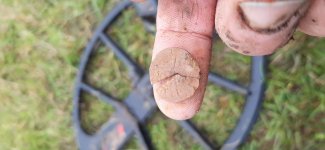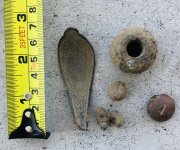Indywar2
Greenie
- Jun 27, 2020
- 12
- 13
- Detector(s) used
- BH Quick Draw Pro, Equinox 800
- Primary Interest:
- All Treasure Hunting
Good evening everyone,
I purchased an Equinox 800 several weeks ago and was finally able to take it out for a test for a couple of days (after reading the manual and numerous videos) to get familiar with the sounds and the TID of the targets.
I am curious what people are digging on the Equinox (kind of a poll):
2) Do you use the sound and TID ? If so, what TID do you dig and what do you leave?
3) Is it recommended to upgrade to version 3 of the software? There seems to be mixed reviews as whether to upgrade or not.
Thanks,
Rob
I purchased an Equinox 800 several weeks ago and was finally able to take it out for a test for a couple of days (after reading the manual and numerous videos) to get familiar with the sounds and the TID of the targets.
I am curious what people are digging on the Equinox (kind of a poll):
- Assumptions: Metal detecting in parks
2) Do you use the sound and TID ? If so, what TID do you dig and what do you leave?
3) Is it recommended to upgrade to version 3 of the software? There seems to be mixed reviews as whether to upgrade or not.
Thanks,
Rob




 . I have not heard about raising the coil, so thank you for that tip. One of the bigger challenges right now is learning pinpointing on the detector. I have used the pinpoint function and used the method where you scan until the target sound is gone and dig at the tip of the coil. More practice definitely need there, but getting marginally better.
. I have not heard about raising the coil, so thank you for that tip. One of the bigger challenges right now is learning pinpointing on the detector. I have used the pinpoint function and used the method where you scan until the target sound is gone and dig at the tip of the coil. More practice definitely need there, but getting marginally better.

